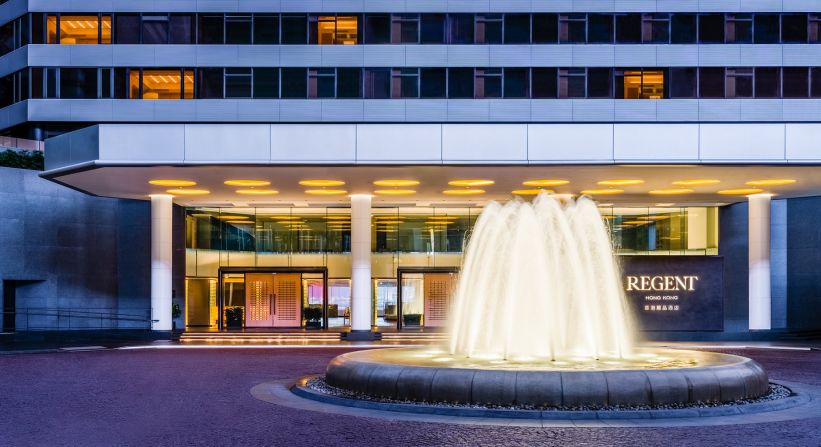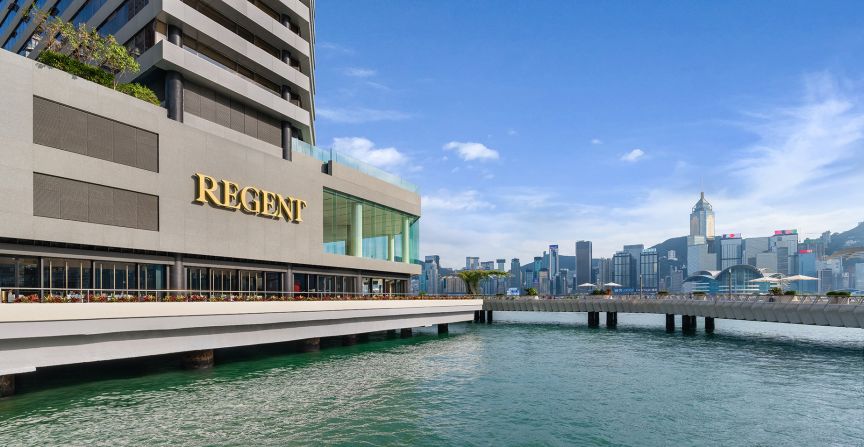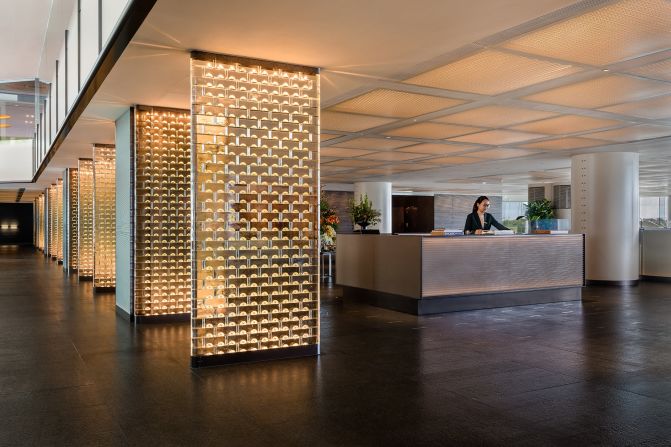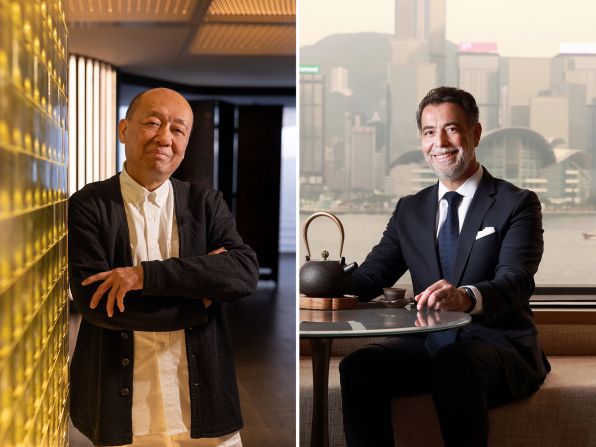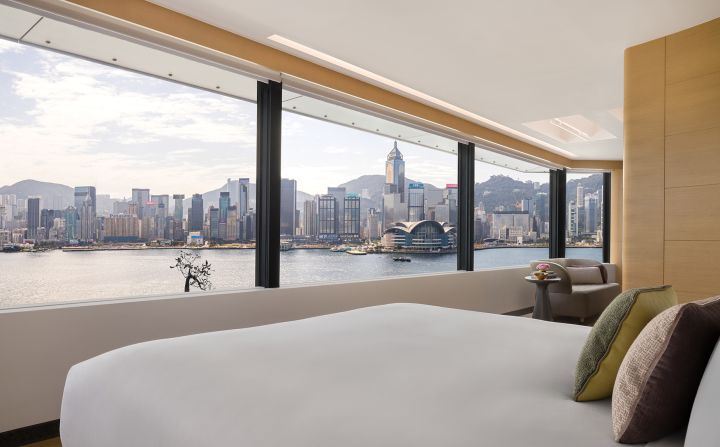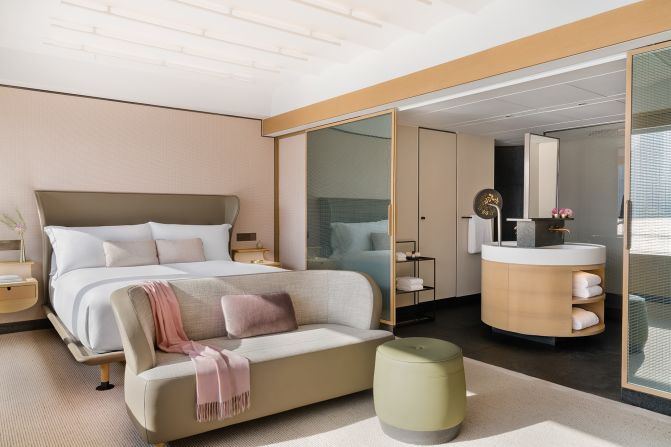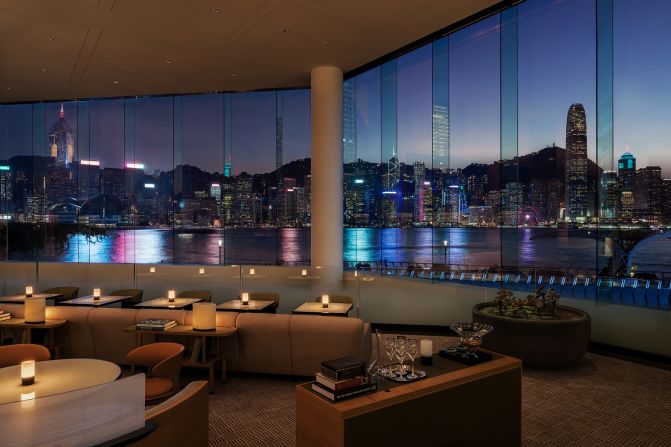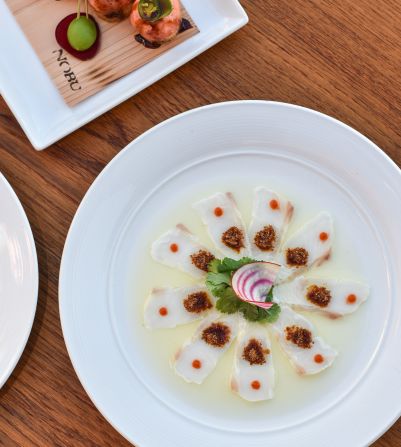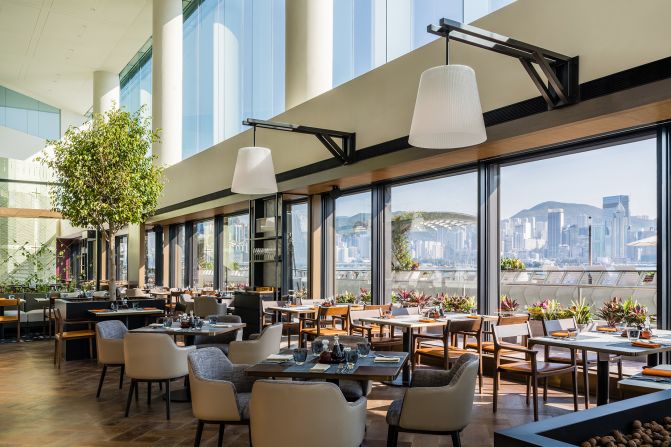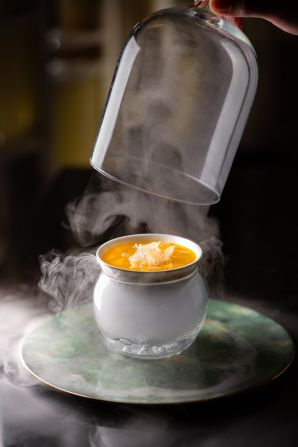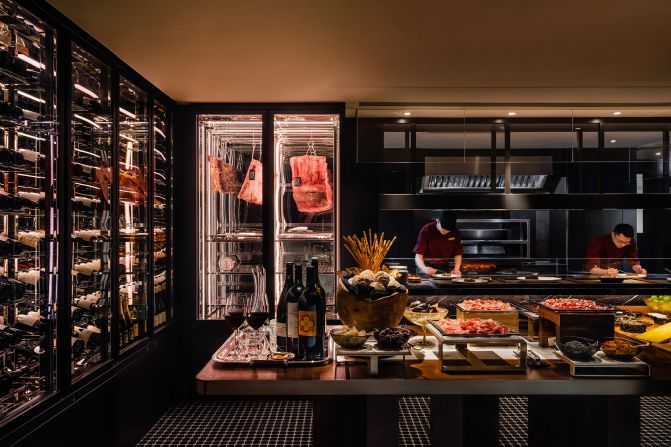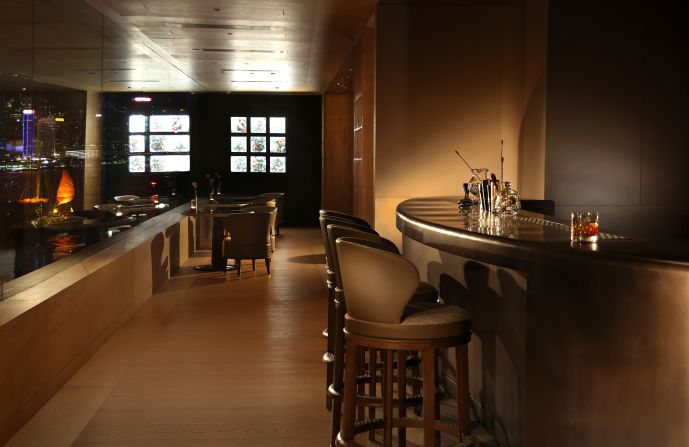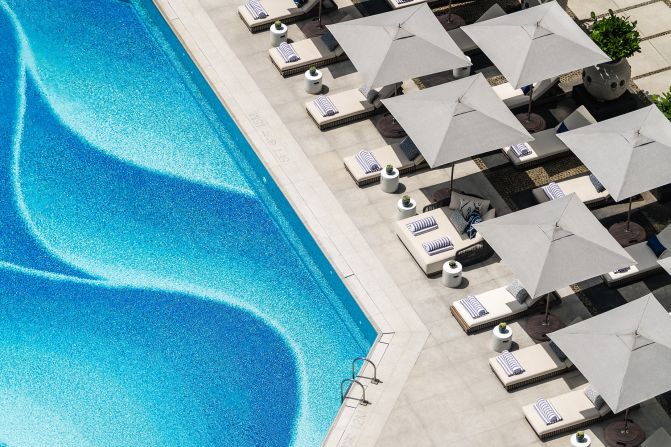Editor’s Note: This CNN Travel series is, or was, sponsored by the destination it highlights. CNN retains full editorial control over subject matter, reporting and frequency of the articles and videos within the sponsorship, in compliance with our policy.
French hotelier Michel Chertouh arrived in Hong Kong during an unusual time: it was 2021 and the city was in the thick of pandemic lockdowns. Even the taxi driver picking him up from his quarantine hotel was curious.
“Welcome to Hong Kong. What brings you to town?” he asked.
“I’m working on a project to bring the Regent back to Hong Kong,” Chertouh replied.
“Regent? That’s super luxury!” said the elated taxi driver, who then proceeded to share a series of tales about the famed city hotel and its place in the history of modern Hong Kong.
Chertouh is now the managing director of the resurrected Regent Hong Kong, which recently reopened to guests. And he’s been hearing a lot of tales like these, all of which serve as a reminder of how high expectations are for the new version of the classic city hotel.
“It’s incredible,” Chertouh, who has been in the industry for more than three decades, tells CNN Travel.
“The collection of statements and stories like these showed me that everyone here has a connection with Regent. I have operated a lot of different hotels in many places. Many have nice buildings but very few have a soul. That’s the big difference between Regent Hong Kong and many other hotels.”
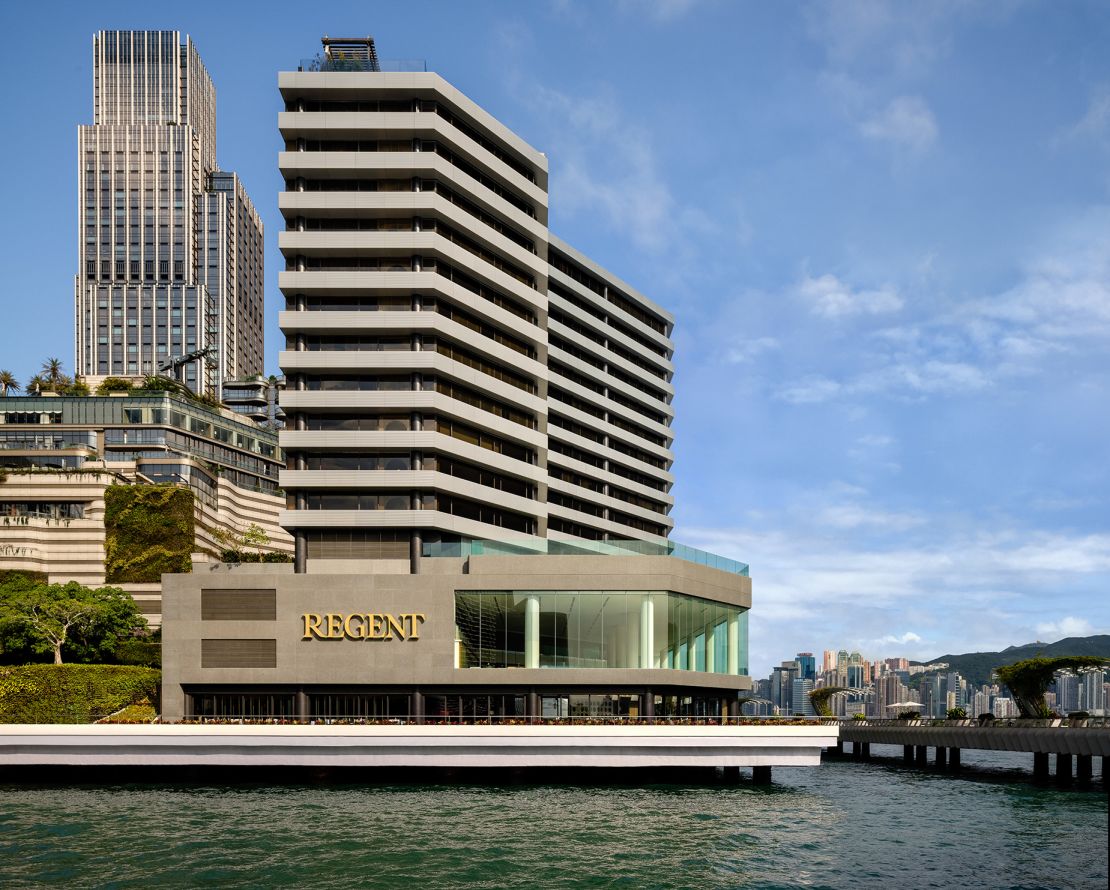
Five-fixture bathrooms and killer views
Regent isn’t the most historic luxury hotel in Hong Kong – the Peninsula Hong Kong across the street has been in town since 1928; the Mandarin Oriental opened in 1963 – but it holds a unique place in the hearts of locals.
First opened in Hong Kong in 1981, Regent Hong Kong was owned by the homegrown New World Development Company and managed by Regent International Hotels. It was part of a pioneering mega retail/entertainment/residential/hotel complex called New World Centre – the go-to recreation destination of Hong Kong at that time.
Although it wasn’t the first Regent Hotel, this particular property was designed to become the new flagship hotel for the group.
Aiming to turn it into the best hotel in the world, Robert Burns, co-founder of Regent, came up with a list of innovative ideas.
One of the most talked about among them was the five-fixture bathroom.
Each hotel room bathroom was fitted with two sinks, a bath, a separate shower room, and a toilet. It became the new benchmark for modern luxury hotels worldwide – which till then mostly consisted of three-fixture bathrooms (a toilet, a sink and a bathtub/shower).
Thanks to “world firsts” like this, not to mention killer views over Victoria Harbour and the grandest ballroom in town, the Regent Hong Kong soon became the talk of the town.
“At that time, Regent was the only one that had a huge ballroom,” says Chertouh.
“All the celebrities’ events, company galas, weddings and anniversaries were taking place here. Then when they had children, they would have the family celebrations here. That’s where the attachment of Hong Kong with this property comes from – because everyone in the community has so many memories here.”
Over the years, the Hong Kong hotel received many “world’s best” awards.
But in 2001, local owner New World Development sold the Hong Kong property to Bass Hotels and Resorts. Under new management, it became the InterContinental Hong Kong.
Meanwhile, Regent Hotels & Resorts went through its own ups and downs, changing ownership a few times.
It wasn’t until 2018 when the InterContinental Hotels Group acquired the majority stake of Regent Hotels & Resorts in 2018 that plans to reunite the city with one of their favorite hotel brands began to take shape.
The InterContinental Hong Kong halted operations in 2020 to make way for a complete makeover, culminating in the return of Regent Hong Kong, which opened this month.
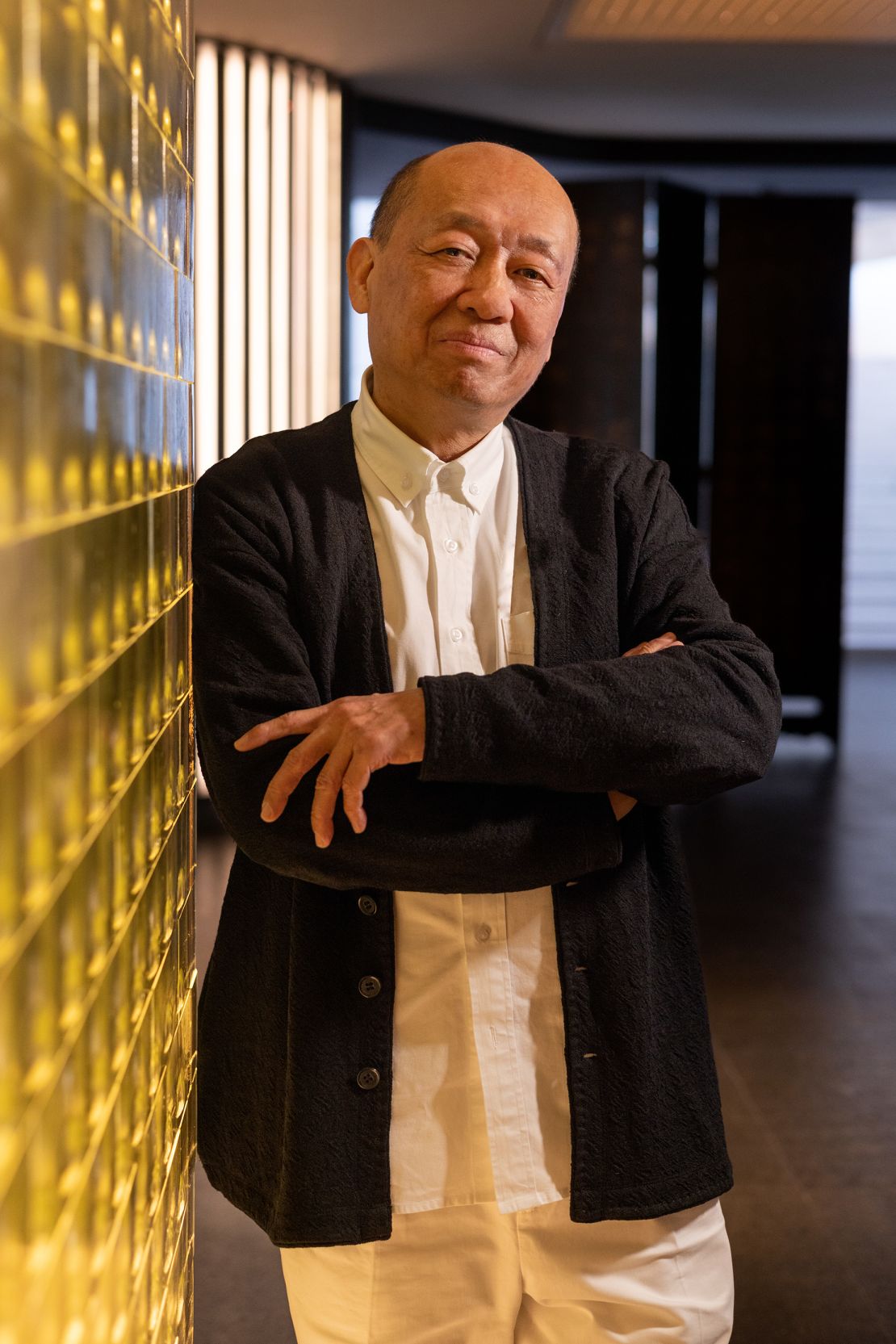
A castle of calmness
The new iteration of Regent Hong Kong was created by Chi Wing Lo, a Hong Kong-born multidisciplinary architect and designer known for his line of high-end made-in-Italy furniture. Though the Regent was Lo’s first hotel project, he has his own connection to the brand.
He left Hong Kong in 1981 – the year Regent Hong Kong opened – to study architecture at the University of Toronto and Harvard University – and has lived in Athens for more than three decades.
But he recalls taking a daily ferry across Hong Kong’s Victoria Harbour to work in the 1970s and witnessing the construction of the hotel.
“I heard there would be a fantastic hotel coming up,” says Lo, sitting by the windowsill in the Regent Hong Kong’s brand-new duplex Presidential Suite.
“I never thought that I would come back 40-something years later to redesign the Regent. It’s a sort of destiny I couldn’t believe.”
The new Regent Hong Kong showcases Lo’s philosophy on luxury.
“Good work should be discovered but never scream at you,” he says. “I always believe in modesty and calmness in my work. I think it is the true sense of timeless Chinese design.”
Instead of following the bold color scheme of gold, red and royal blue that represented the old Regent – though these can be found in subtle amounts – the new design exudes calmness, featuring more muted colors and natural materials.
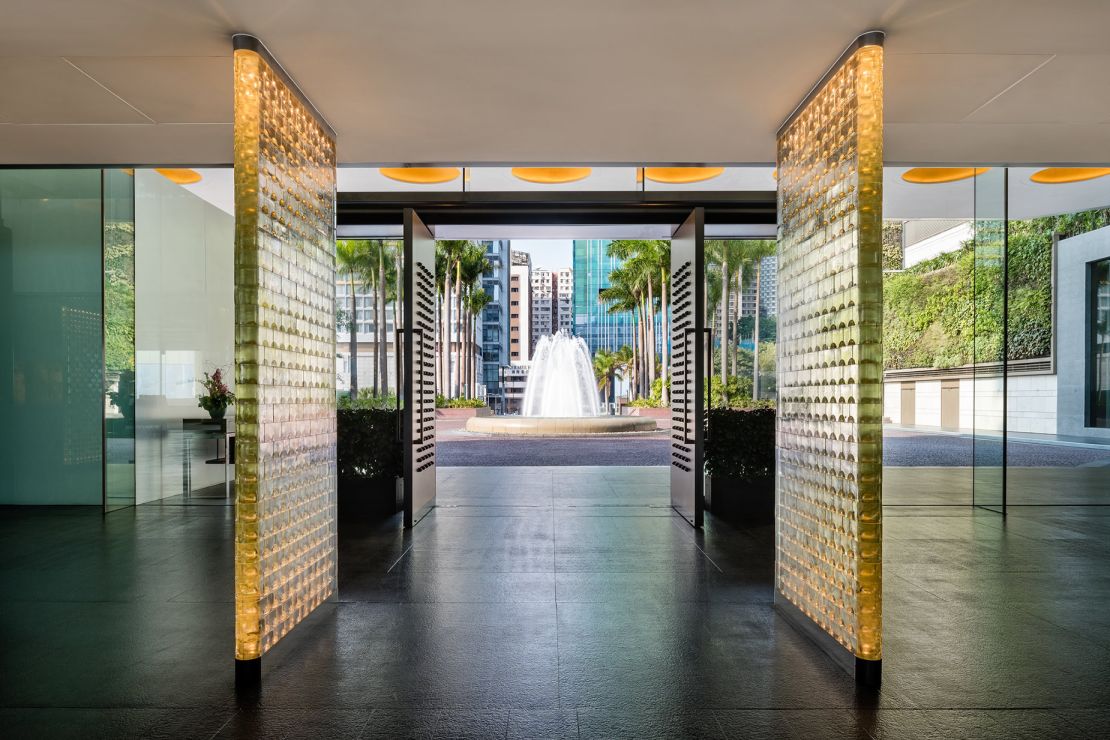
Guests visiting the hotel first walk past its classic Feng Shui fountain before entering through a set of wooden double doors with decorative round studs, designed to resemble a gateway to an ancient Chinese palace.
“We came up with this (castle-inspired design) idea for guests to find their own quietness. I think finding quietness is the best way of curing stress,” says Lo.
As the thick doors shut the outside world away, visitors find themselves in a dimly lit lobby with reimagined “chandeliers” made to look like brick walls. These are made of liu li glass, a special Chinese glassmaking technique that creates glass blocks by molding and casting.
Beyond the atmospheric lobby is the high-ceilinged, light-filled Lobby Lounge and Harbourside restaurants.
And not to worry, the floor-to-ceiling windows in this corner – which have made the restaurants some of the best places to admire the city’s famed harbor views for decades – are still there.
And so are some of the staff.
Joyce Lai joined the Hong Kong Regent in 1993 as a junior waitress at Harbourside restaurant.
“Regent was always considered a very sophisticated, prestigious and glamorous hotel and a favorite meeting place for local and international high-profile guests,” she tells CNN Travel.
“Local celebrities and movie stars would frequent Harbourside as their ‘coffee shop’ of preference. I even had an opportunity to serve US President George Bush (Sr) for breakfast when he stayed at Regent Hong Kong.”
Through the decades, Lai worked in different roles and departments around the hotel and is now Regent Hong Kong’s service center manager, overseeing the team that takes care of all guest inquiries.
Every year, Lai would bring her young children to join the employees’ Christmas Party at the hotel. Her son once modeled at a festive photoshoot for the hotel’s holiday gingerbread-making class.
“I still have the photos… After so many years, this has become my home. My children consider the hotel their second home, having spent so much time here,” says Lai.
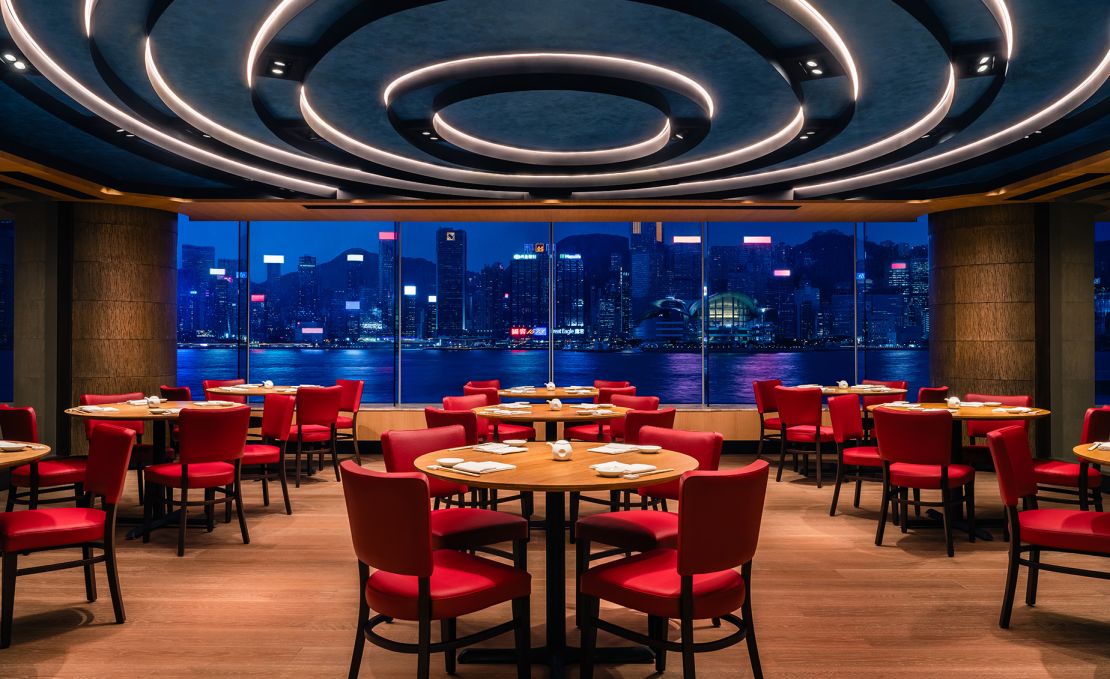
The new Regent Hong Kong
Other popular features from the original Regent Hong Kong remain, such as the grand marble staircase – an obligatory group photo spot for partygoers at the hotel – while Lo has created several pieces inspired by the old hotel’s collectibles and designs, including an impressive folding screen artwork on the lobby wall.
The new Regent Hong Kong has 497 guest rooms, including 129 suites. Its Presidential Suite, with a private terrace and an infinity pool overlooking the harbor, is one of the largest in town.
There are six food and beverage outlets on the property including the Harbourside restaurant and the Lobby Lounge.
Two-Michelin-star Cantonese restaurant Yan Toh Heen, like the hotel, has reverted to its original name: Lai Ching Heen. The extravagant jade place settings and the delicate dim sum have fortunately remained unchanged.
Nobu, by famed restaurateur and author Nobu Matsuhisa, and the Steak House are two other hot Regent dining destinations for gourmets in town.
Meanwhile, a bar and cigar lounge called Qura is slated to open in the Regent in the coming weeks.
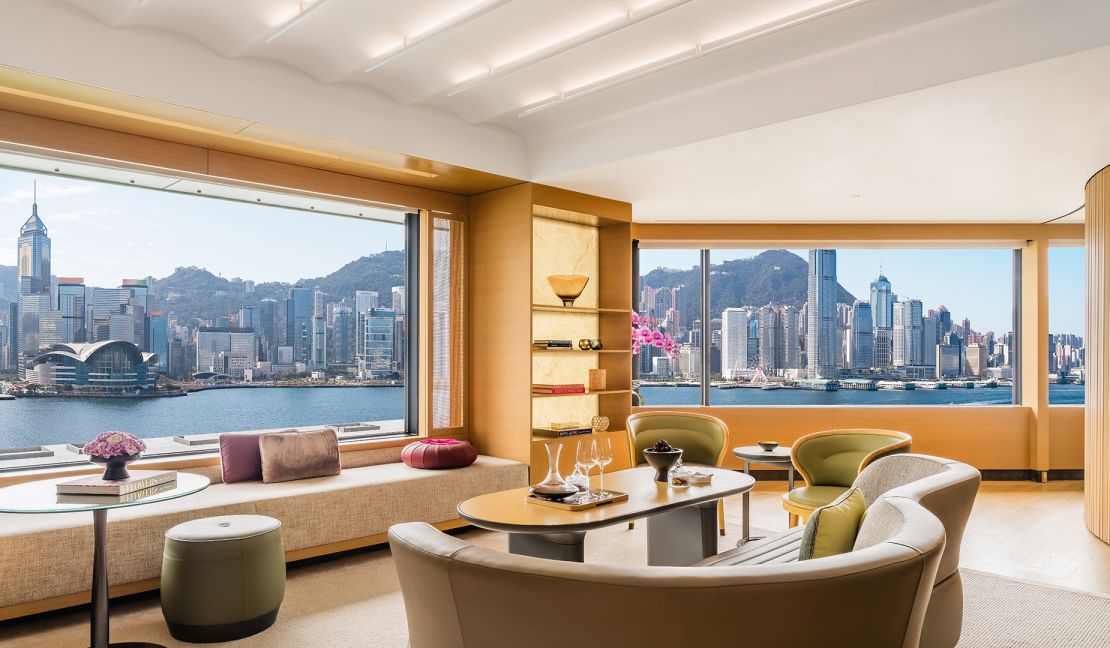
Redefining luxury
On the eve of the reopening, Chertouh and Lo are busy going through the rooms and fine-tuning small details around the hotel.
“The tree is missing from this window,” Lo points out as he tours one of the rooms, referring to the Stone Garden – a metallic installation that sits outside each of the harbor-facing rooms, designed to connect guests with the city.
Like the Regent hoteliers who came before them, the duo hopes that this is the beginning of their journey to once again redefine what luxury hospitality means in Hong Kong.
One key ingredient of their “new luxury” concept is the need to pay attention to the minutest details – from design to service – in a discreet manner.
For instance, most of the Regent Hong Kong’s chairs have been designed to be a few centimeters lower than usual to make the rooms feel airier. They are also rotatable, allowing guests to slide into their seats elegantly and turn to see the views without the need to move them.
The usual fruit bowls are there but contain only grapes. Welcome pastries can be finished in two bites so guests don’t have to cut anything up themselves.
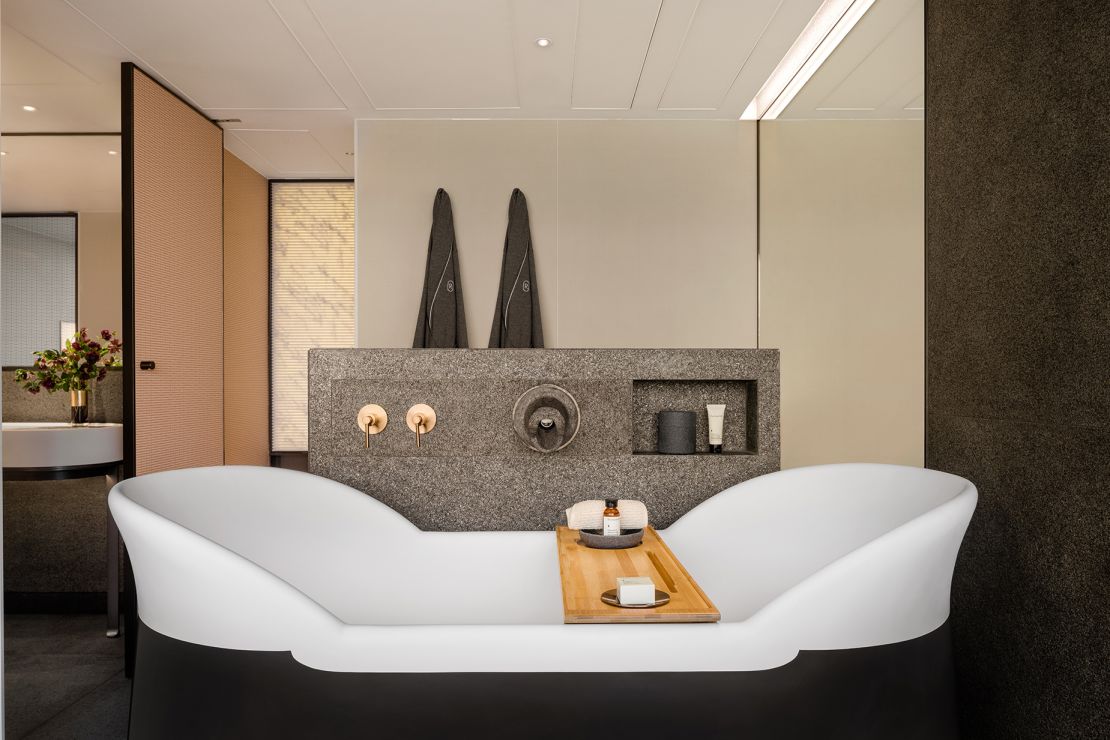
A new soaking tub, designed by Lo, cradles bathers in an unorthodox way.
Beds are made in a more relaxed fashion so that guests “don’t have to fight” stiffly tucked sheets and blankets to get comfortable.
“Like Chi Wing’s design, in the world today, less is much better than more. Simplicity is a luxury that everybody wants today – as we are getting stimulation non-stop,” says Chertouh.
“(Luxury is) having the opportunity to reset and not being distracted by someone trying to push you with ‘service.’ We are very proud of our legacy, but we aren’t hostage to that legacy. We are moving into the hospitality of today and tomorrow.”

